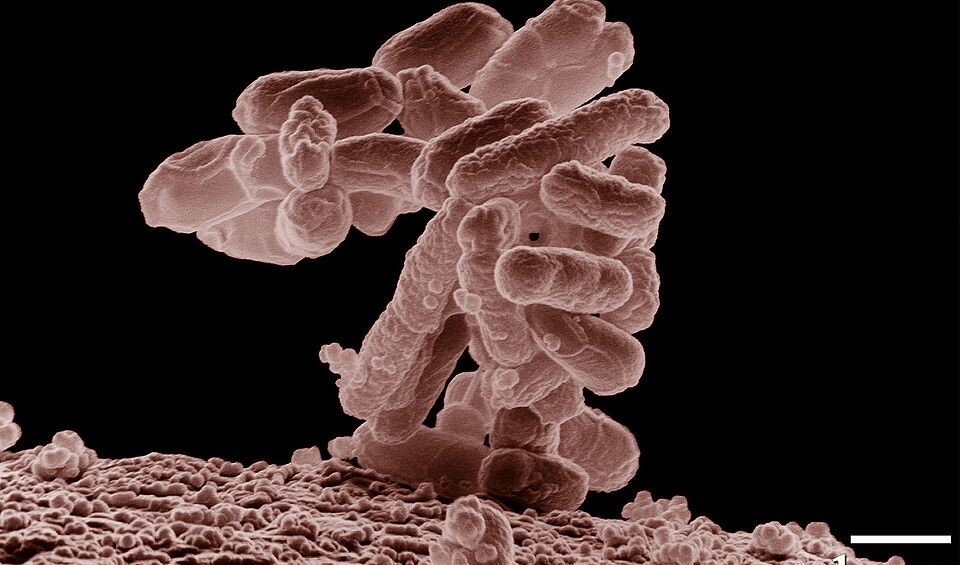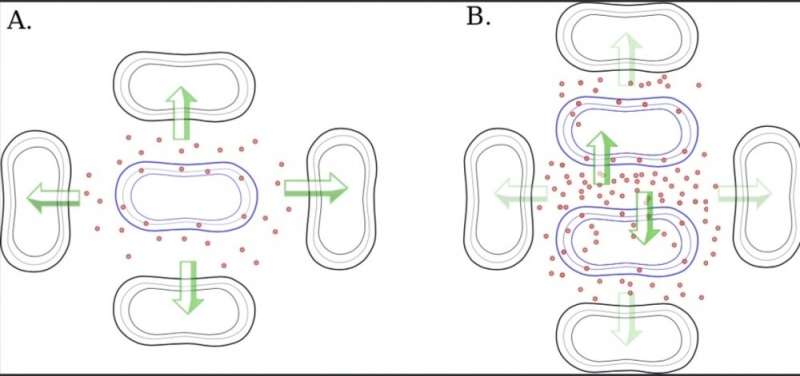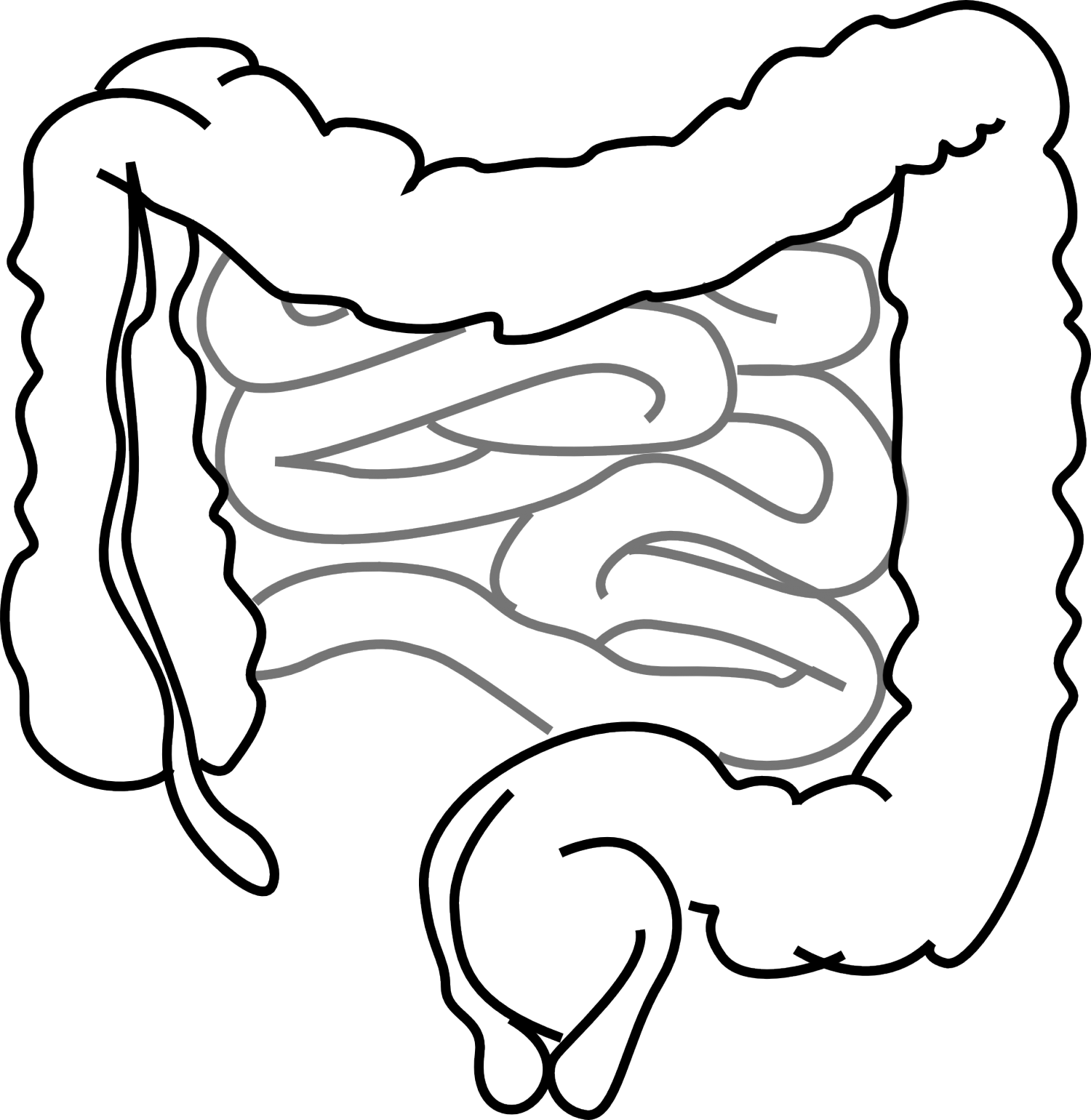#Bacterial competition in situations of food scarcity prevents survival of mutants

“#Bacterial competition in situations of food scarcity prevents survival of mutants”

A study conducted by researchers at the University of São Paulo in Brazil shows that competition for nutrients and lack of cooperation among bacteria of the species Escherichia coli in the same population and in situations of food scarcity prevent mutants that are better adapted to the environment from flourishing, except those that organize in small groups. The phenomenon masks the emergence of novel bacterial variants, making the mutation rate seem lower than it is in fact.
Mutants constantly emerge and accumulate from one generation to the next. Mutation frequency determines the evolution of a given species. Understanding the origin of mutations is also important to explain biological processes. In the case of bacteria, for example, it helps explain the potential evolutionary divergence of a pathogen in an epidemic or resistance to antibiotics.
In an article on the study published in the journal BMC Biology, the researchers compare what happens in colonies of E. coli with the “tragedy of the commons”, a term used by economists as well as ecologists to refer to the problems that occur when individuals pursue personal gain to the detriment of their community, resulting in the destruction of public goods or natural resources.
“At times of nutritional scarcity, bacteria don’t interact for mutual benefit, to assure growth of the colony. We found that even the emergence of a few individuals that can use the available food sources doesn’t prevent this lack of cooperation from jeopardizing the entire population. Only a small number of mutants are able to multiply and form new colonies,” said Beny Spira, a professor at the university’s Biomedical Sciences Institute (ICB-USP) and last author of the article.
The finding explains the longstanding question of why the frequency of mutants capable of cleaving certain nutrients (breaking them down into molecules that can be metabolized) is always much lower in practice than in theory.
The research on mutant frequency masking is part of a project supported by São Paulo Research Foundation—FAPESP via a Research Regular Grant, a doctoral scholarship and a scientific initiation grant.

Tragedy of the commons
Unlike wild-type E. coli, bacteria with PHO-constitutive mutations overexpress the enzyme alkaline phosphatase and hence can cleave glycerol-2-phosphate (G2P) to release phosphate and glycerol, an important source of carbon, especially in situations of nutritional scarcity. PHO stands for phosphate. The “PHO regulon” helps plant cells survive and thrive despite nutrient scarcity and phosphate depletion in the environment.
The frequency of PHO-constitutive colonies on G2P selective plates (cell culture dishes) is exceptionally low. “When we measure actual mutant frequency, we find that in a population of 100 billion bacteria there are tens of thousands of PHO-constitutive mutants. Yet only 50 to 100 manage to multiply and produce new colonies with the mutation that confers the ability to cleave G2P,” Spira told.
The mutant, he explained, is capable of expressing large amounts of alkaline phosphatase, which is compartmentalized in the cell periplasm (a region between the inner cytoplasmic and outer membranes). Thus when G2P is cleaved and glycerol produced, the nutrient can be stored by the bacterium or released into the external environment, where it will be promptly taken up by the many wild-type (non-mutant) bacteria in the vicinity.
However, the glycerol released by mutants is not sufficient for colonies of wild-type bacteria to grow. Some 20,000 bacteria can be found in the vicinity of every mutant. “The few mutants that succeed in multiplying are those that cooperate with each other to form clusters and swap glycerol. Otherwise, the nutrient becomes scarce, mutants are inhibited, and the population dies out,” Spira said.
Wild-type and mutant bacteria normally compete for insufficient glycerol. “Mutants don’t multiply owing to the scarcity of this nutrient, creating the impression that there are no mutations and drastically reducing the frequency of PHO-constitutive mutants in the population,” he said.
Inhibition of PHO-constitutive mutants, therefore, is an example of mutation frequency masked by competition between mutants and their ancestral wild-type cells. “The example shows that cases similar to a ‘tragedy of the commons’ may occur in other settings and should be taken into consideration when mutation rates are estimated,” he said.
Laser tool effective at identifying mutant listeria bacteria
Henrique Iglesias Neves et al, Competition for nutritional resources masks the true frequency of bacterial mutants, BMC Biology (2020). DOI: 10.1186/s12915-020-00913-1
Citation:
Bacterial competition in situations of food scarcity prevents survival of mutants (2021, March 10)
retrieved 10 March 2021
from https://phys.org/news/2021-03-bacterial-competition-situations-food-scarcity.html
This document is subject to copyright. Apart from any fair dealing for the purpose of private study or research, no
part may be reproduced without the written permission. The content is provided for information purposes only.
If you liked the article, do not forget to share it with your friends. Follow us on Google News too, click on the star and choose us from your favorites.
For forums sites go to Forum.BuradaBiliyorum.Com
If you want to read more Like this articles, you can visit our Science category.




